
Gynecomastia is a condition in which a man’s chest develops a shape resembling that of a woman’s breast. It is typically caused by the development of mammary gland tissue beneath the areola.
There are two types of gynecomastia:
-
True Gynecomastia: Enlargement due to developed glandular tissue.
-
Pseudogynecomastia: Enlargement caused primarily by fat accumulation.
This guide will help you identify true gynecomastia through simple self-examination.

La gynécomastie signifie littéralement que les seins d’un homme ont la même forme que ceux d’une femme.
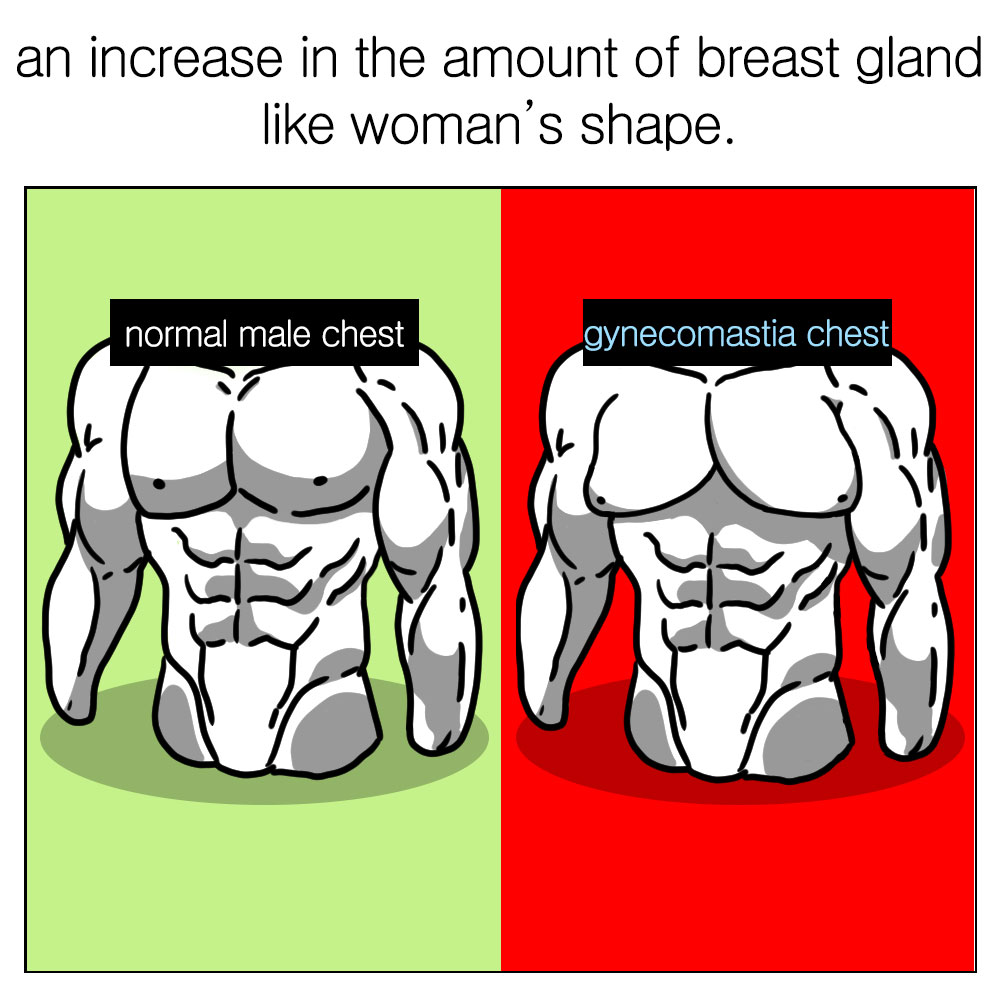
La poitrine masculine a un aspect relativement plat avec la peau, les graisses et les muscles.
Step 1: Understand the Normal Male Chest Structure
A typical male chest consists of:
-
Skin
-
Subcutaneous fat
-
Muscle tissue (mainly the pectoralis major)
-
Small traces of mammary gland (normally <1 inch, ~5 grams)
In most men, glandular tissue is minimal and not easily palpable with fingers.
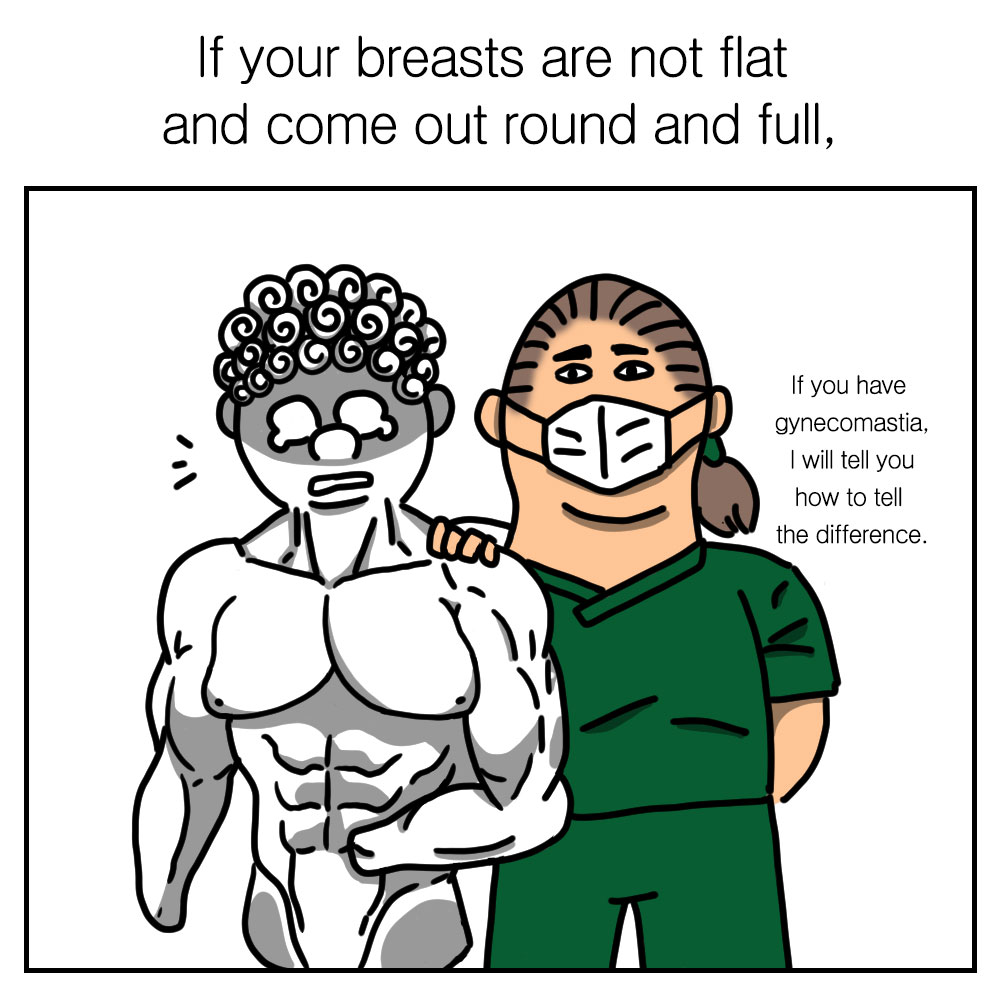
D’autre part, les seins des femmes ont une apparence dodue en raison du tissu glandulaire qui s’est développé dans cette zone.
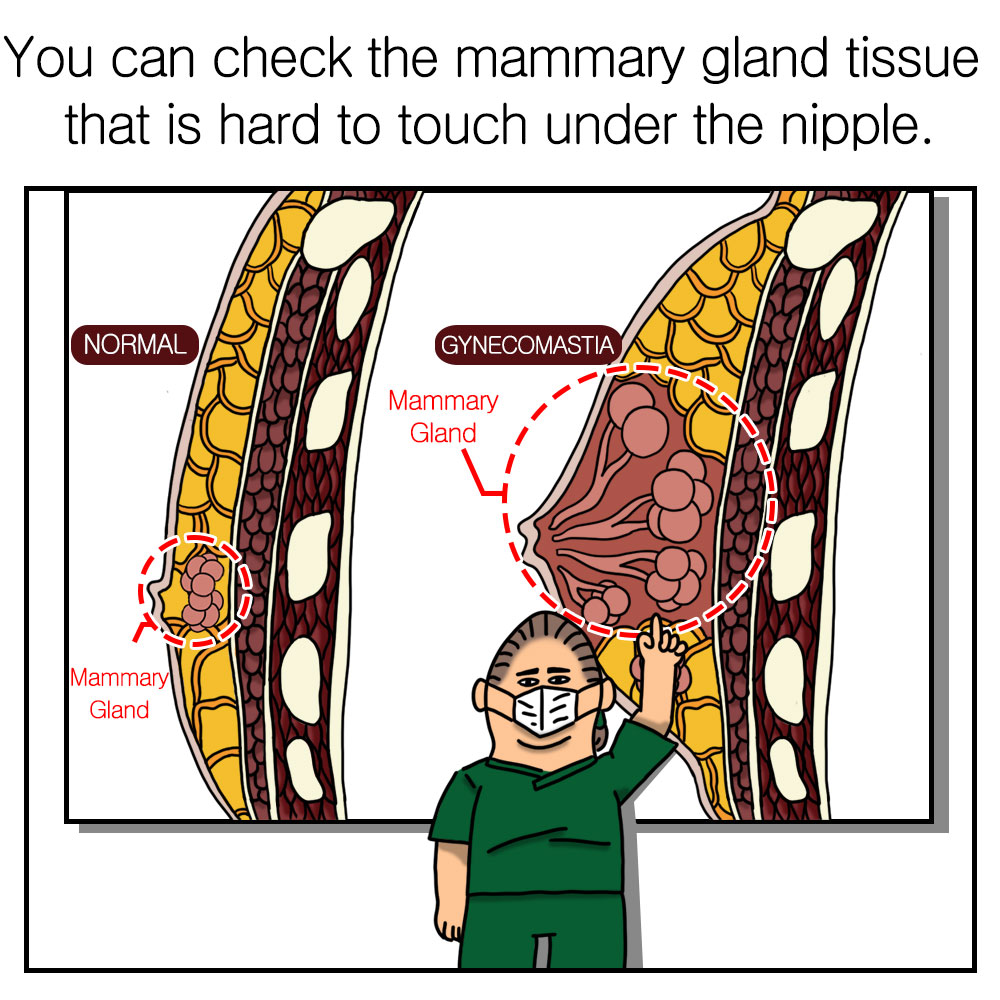
Vous pouvez vérifier s’il y a un tissu de glande mammaire bien tenu sous l’aréole.
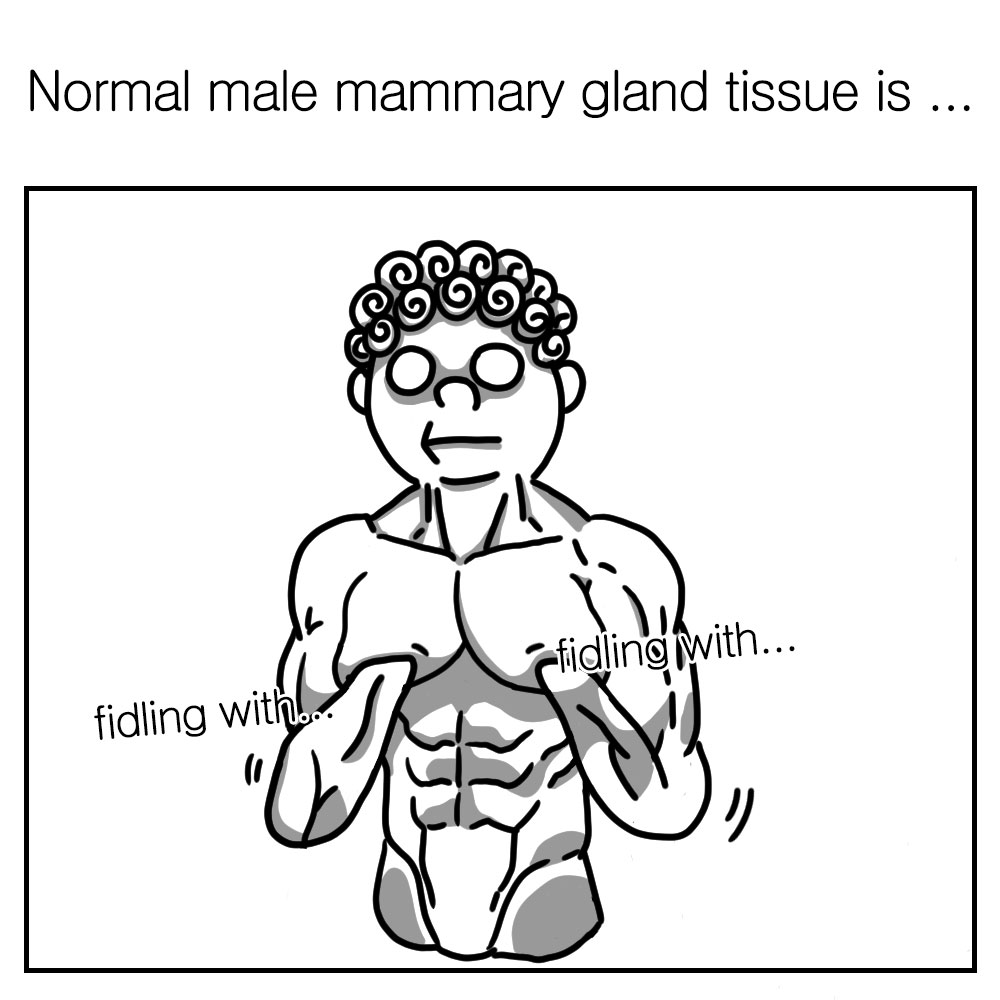
Of course, normal men also have traces of mammary glands.
However, since they are usually less than 1 inch in size and weigh around 5~10 grams,
they are difficult to hold with your fingers.
✋ Step 2: Check Under the Areola
Using your fingers, gently press around and under your nipple (areola) area.
-
If you feel a firm, rubbery disc or lump beneath the areola, this may indicate developed glandular tissue.
-
If this tissue is easily graspable and surrounded by softer fat, true gynecomastia is likely.
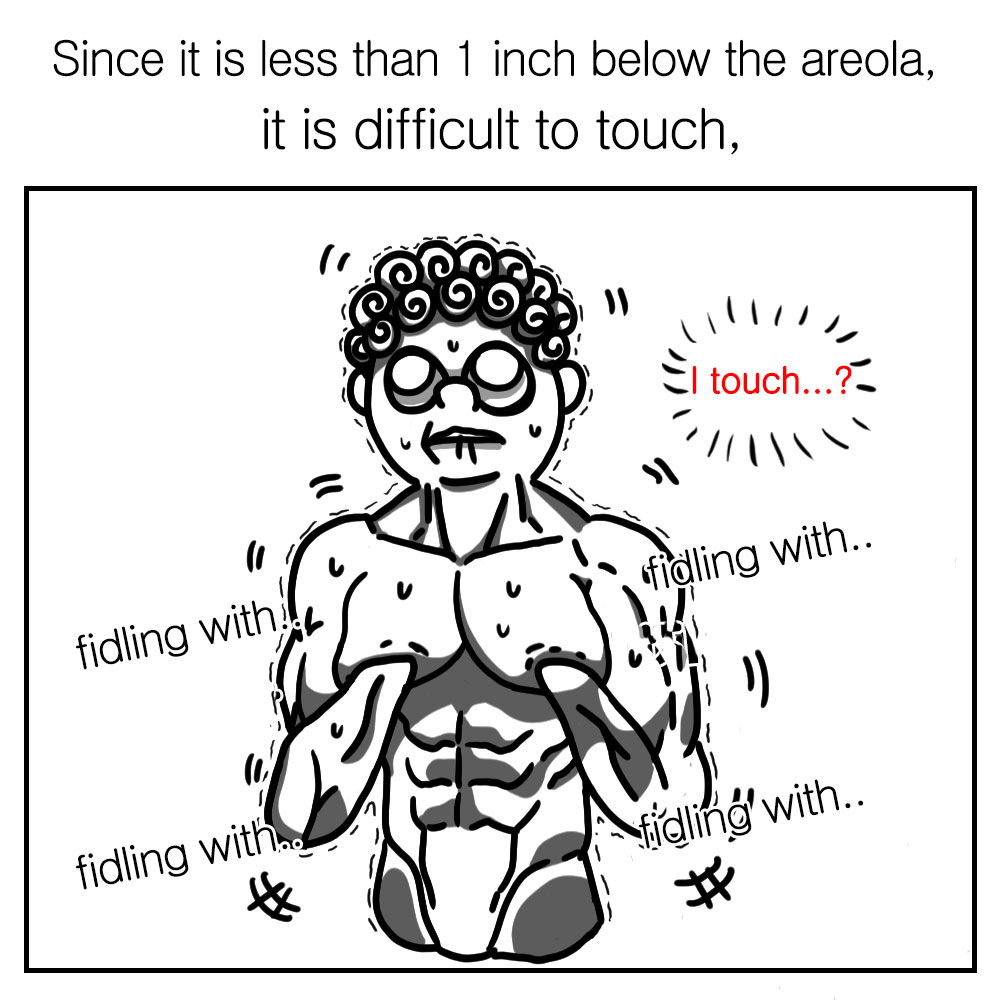
Cependant, si la glande mammaire est assez grande pour être palpable,
et une graisse plus molle s’accumule autour d’elle,
La vraie gynécomastie peut être fortement suspectée.

L’échographie ou la mammographie peuvent être utilisées pour un diagnostic précis,
Mais un spécialiste expérimenté de la gynécomastie peut facilement diagnostiquer la gynécomastie en la touchant légèrement.
Et, vous devez obtenir une consultation détaillée d’un spécialiste sur la façon de le traiter.
Step 3: Confirm with a Specialist
Although self-diagnosis is a helpful first step, an accurate diagnosis should be made by a medical professional using:
-
Physical examination
-
Ultrasound or mammography (if needed)
At Evita Clinic, our gynecomastia specialists can usually confirm the diagnosis with a brief touch and visual assessment.
✅ Next Step: Consultation & Treatment Plan
If you suspect you have gynecomastia, schedule a consultation.
We’ll explain your condition in detail and recommend personalized treatment options — surgical or non-surgical.
Most true gynecomastia cases require surgical removal of the gland for a permanent solution.
